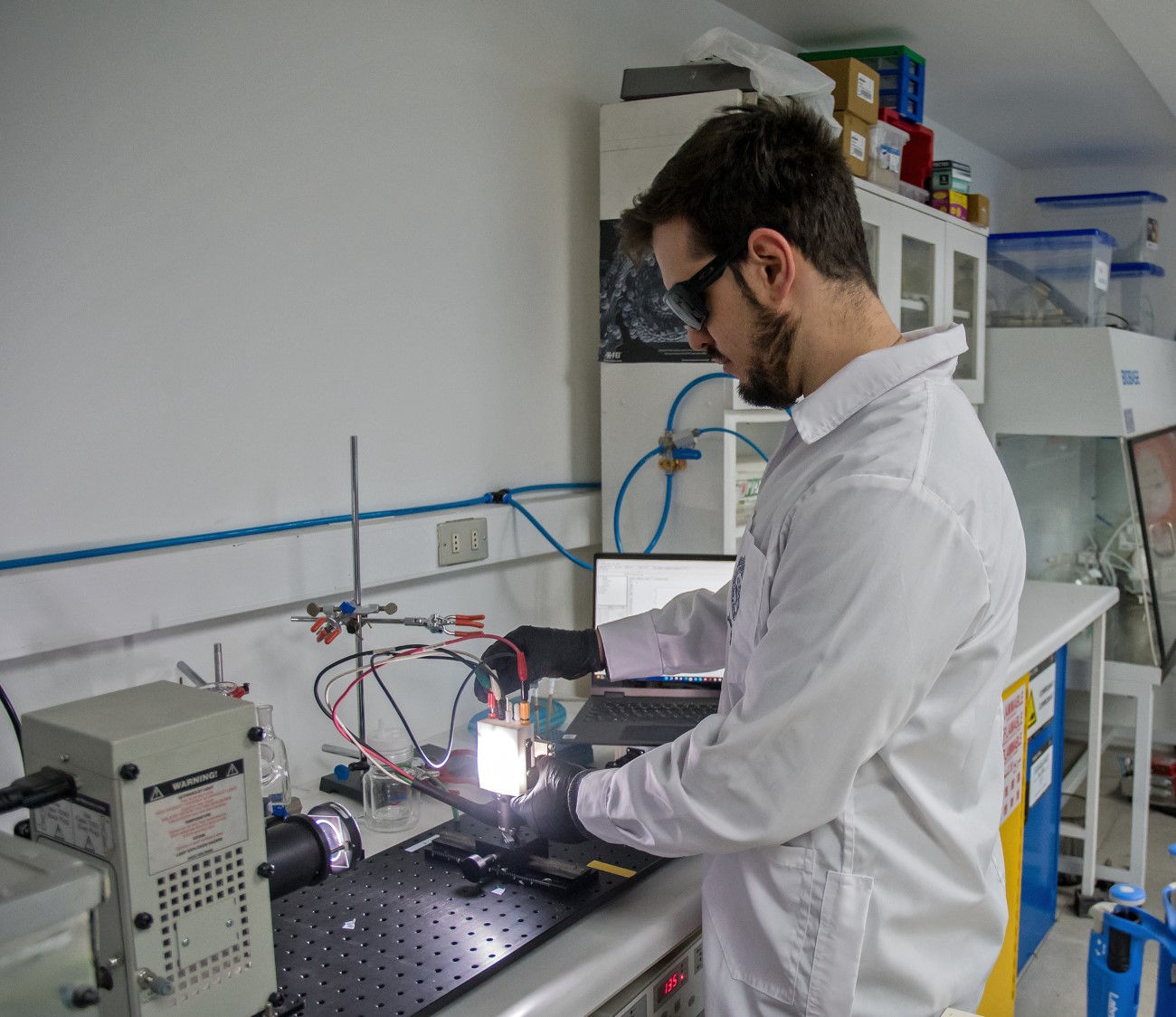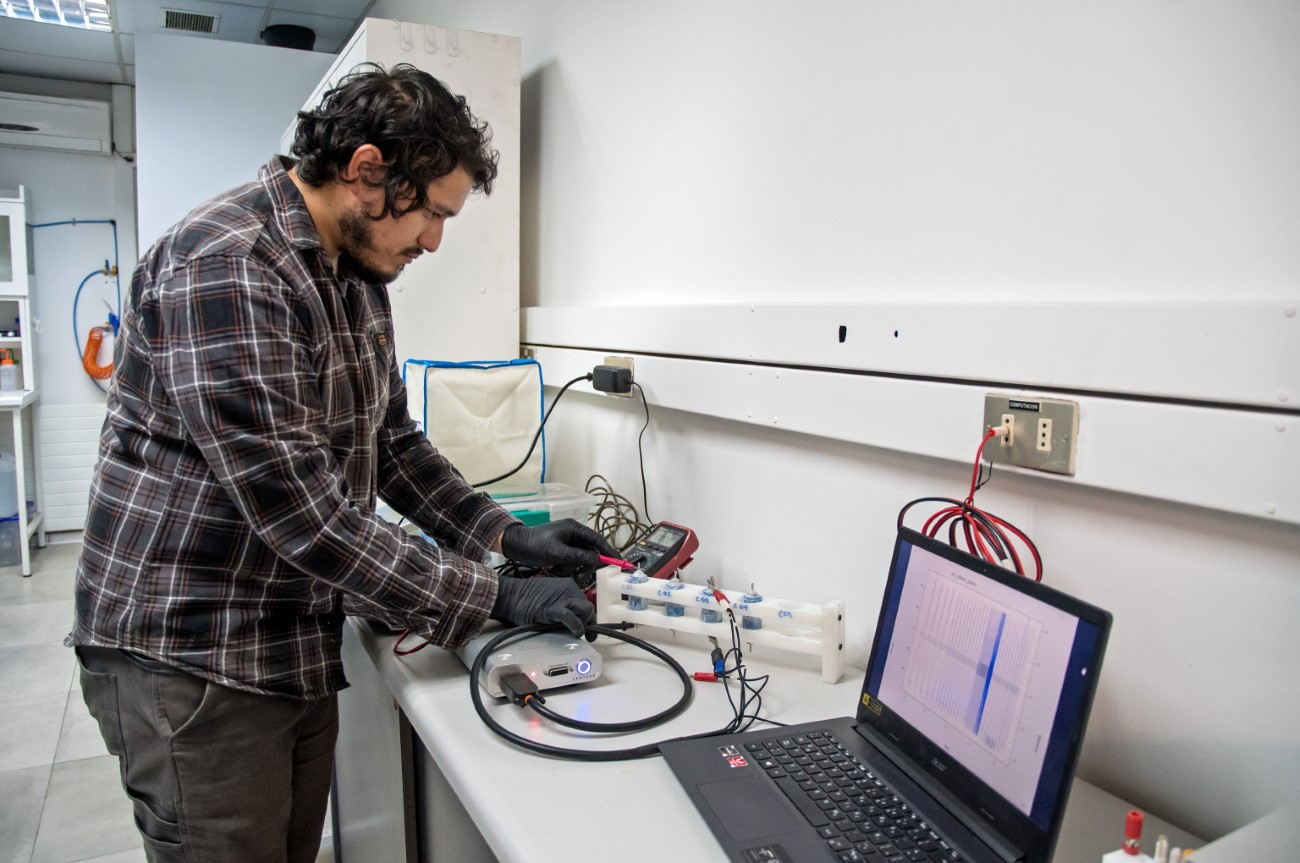Experimental Condensed Matter Physics
Samuel Hevia 2 Research Laboratory
Experimental Condensed Matter Physics
Samuel Hevia 2 Research Laboratory

Fabrication of a perovskite-based photoanode
PhD candidate in chemistry, José Raúl Sosa, is working on the fabrication of a perovskite-based photoanode (CsPbBr3) with application in photoelectrochemical water splitting and green hydrogen production. The picture shows the photoelectrochemical cell assembly for current response measurement using simulated solar illumination.

Fabrication of spongy vanadium pentoxide
PhD candidate in physics, Matías Picuntureo, focuses his doctoral thesis work on the fabrication of spongy vanadium pentoxide (V2O5) nanostructures using vertically aligned carbon nanotubes (VACNTs) as a template. The main application of the material is the manufacture of lithium batteries. In the picture, the cells with the nanomaterials are being prepared for a charge/discharge study.

Fabrication of nanoporous alumina inserts
Daniel Cerda, PhD candidate in physics, is working on the fabrication of nanoporous alumina inserts for the production of carbon nanotubes. The image shows the removal of aluminum using a solution of CuCl2 in HCl. This step is of utmost importance to continue the material anodizing process.
Welcome to the Samuel Hevia Research Laboratory. Directed by professor Samuel Hevia. In this laboratory we carry out experimental research in Experimental Condensed Matter Physics.
We invite you to click on each of the highlighted points to learn more about our techniques and equipment.